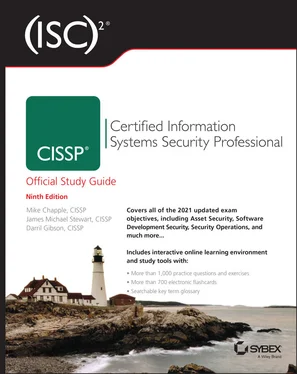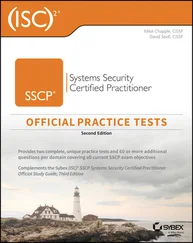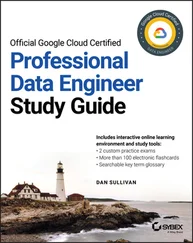Acquisition does not relate exclusively to hardware and software. Outsourcing, contracting with suppliers, and engaging consultants are also elements of acquisition. Integrating security assessments when working with external entities is just as important as ensuring a product was designed with security in mind.
In many cases, ongoing security monitoring, management, and assessment may be required. This could be an industry best practice or a regulation. Such assessment and monitoring might be performed by the organization internally or may require the use of external auditors. When engaging third-party assessment and monitoring services, keep in mind that the external entity needs to show security-mindedness in their business operations. If an external organization is unable to manage their own internal operations on a secure basis, how can they provide reliable security management functions for yours?
When evaluating a third party for your security integration, consider the following processes:
On-Site Assessment Visit the site of the organization to interview personnel and observe their operating habits.
Document Exchange and Review Investigate the means by which datasets and documentation are exchanged as well as the formal processes by which they perform assessments and reviews.
Process/Policy Review Request copies of their security policies, processes/procedures, and documentation of incidents and responses for review.
Third-Party Audit Having an independent third-party auditor, as defined by the American Institute of Certified Public Accountants (AICPA), can provide an unbiased review of an entity's security infrastructure, based on Service Organization Control (SOC) reports. See Chapter 15for details on SOC reports.
For all acquisitions, establish minimum security requirements. These should be modeled after your existing security policy. The security requirements for new hardware, software, or services should always meet or exceed the security of your existing infrastructure. When working with an external service, be sure to review any service-level agreement (SLA) to ensure that security is a prescribed component of the contracted services. When that external provider is crafting software or providing a service (such as a cloud provider), then a service-level requirement (SLR) may need to be defined. An SLR is a statement of the expectations of service and performance from the product or service of a vendor. Often, an SLR is provided by the customer/client prior to the establishment of the SLA (which should incorporate the elements of the SLR if the vendor expects the customer to sign the agreement).
Two additional examples of organizational processes that are essential to strong security governance are change control/change management (see Chapter 16, “Managing Security Operations”) and data classification (see Chapter 5, “Protecting Security of Assets”).
Organizational Roles and Responsibilities
A security role is the part an individual plays in the overall scheme of security implementation and administration within an organization. Security roles are not necessarily prescribed in job descriptions because they are not always distinct or static. Familiarity with security roles will help in establishing a communications and support structure within an organization. This structure will enable the deployment and enforcement of the security policy. This section focuses on general-purpose security roles for managing an overall security infrastructure. See Chapter 5for roles related specifically to data management.
The following are the common security roles present in a typical secured environment:
Senior Manager The organizational owner (senior manager) role is assigned to the person who is ultimately responsible for the security maintained by an organization and who should be most concerned about the protection of its assets. The senior manager must sign off on all security policy issues. There is no effective security policy if the senior management does not authorize and support it. The senior manager is the person who will be held liable for the overall success or failure of a security solution and is responsible for exercising due diligence and due care in establishing security for an organization. Even though senior managers are ultimately responsible for security, they rarely implement security solutions. In most cases, that responsibility is delegated to security professionals within the organization.
Security Professional The security professional, information security (InfoSec) officer, or computer incident response team (CIRT) role is assigned to a trained and experienced network, systems, and security engineer who is responsible for following the directives mandated by senior management. The security professional has the functional responsibility for security, including writing the security policy and implementing it. The role of security professional may be labeled as an IS/IT role, but its focus is on protection more than function. The security professional role is often filled by a team that is responsible for designing and implementing security solutions based on the approved security policy. Security professionals are not decision makers; they are implementers. All decisions must be left to the senior manager.
Asset Owner The asset owner role is assigned to the person who is responsible for classifying information for placement and protection within the security solution. The asset owner is typically a high-level manager who is ultimately responsible for asset protection. However, the asset owner usually delegates the responsibility of the actual data management tasks to a custodian.
Custodian The custodian role is assigned to the user who is responsible for the tasks of implementing the prescribed protection defined by the security policy and senior management. The custodian performs all activities necessary to provide adequate protection for the CIA Triad (confidentiality, integrity, and availability) of data and to fulfill the requirements and responsibilities delegated from upper management. These activities can include performing and testing backups, validating data integrity, deploying security solutions, and managing data storage based on classification.
User The user (end user or operator) role is assigned to any person who has access to the secured system. A user's access is tied to their work tasks and is limited so that they have only enough access to perform the tasks necessary for their job position (the principle of least privilege). Users are responsible for understanding and upholding the security policy of an organization by following prescribed operational procedures and operating within defined security parameters.
Auditor An auditor is responsible for reviewing and verifying that the security policy is properly implemented and the derived security solutions are adequate. The auditor produces compliance and effectiveness reports that are reviewed by the senior manager. Issues discovered through these reports are transformed into new directives assigned by the senior manager to security professionals or custodians.
All of these roles serve an important function within a secured environment. They are useful for identifying liability and responsibility as well as for identifying the hierarchical management and delegation scheme.
Security Control Frameworks
One of the first and most important security planning steps is to consider the overall security control framework or structure of the security solution desired by the organization. You can choose from several options in regard to security concept infrastructure; however, one of the more widely used security control frameworks is Control Objectives for Information and Related Technology (COBIT) . COBIT is a documented set of best IT security practices crafted by the Information Systems Audit and Control Association (ISACA). It prescribes goals and requirements for security controls and encourages the mapping of IT security ideals to business objectives. COBIT is based on six key principles for governance and management of enterprise IT:
Читать дальше












